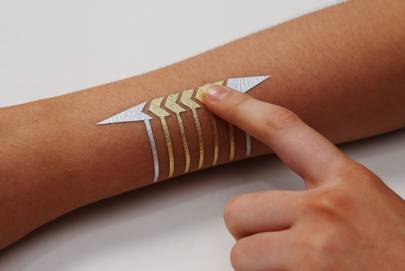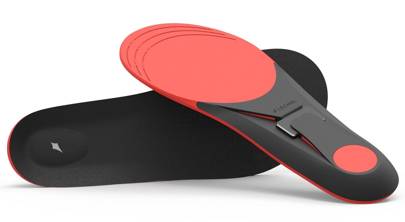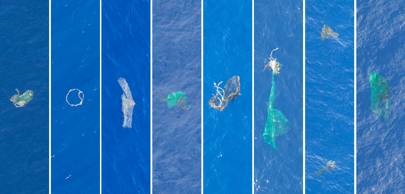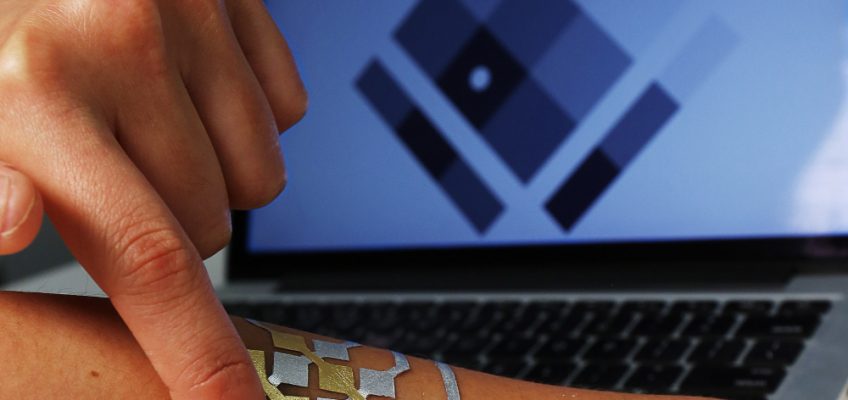We meet some of the entrepreneurs combining beautiful design with technology to make the world a better place.
Art and science have never been separate. Now a new breed of polymath is embracing a combination of the creative and analytical to form meaningful connections between people and their environment. We meet the digital age Renaissance artists making a tangible impact through beautiful objects and experiences.
Smog Free Tower
For Daan Roosegaarde true beauty is clean air. His company, Studio Roosegaarde, previously worked on a variety of life-improving projects – such as light emitting bicycle paths and smart highways – before Beijing’s smog inspired him to create a ‘clean air temple’ in the city.
The Smog Free Tower, which opened in Beijing in September 2016, cleans 30,000 cubic metres of air every hour using just 1,170 watts of energy – roughly the same as it takes to power an average water boiler.
The extracted smog particles are compressed into solid materials that get turned into design objects, such as cufflinks and rings. With each sale of Smog Free Jewellery, another 1,000 cubic metres of clean air gets donated to the city. “I think it’s part of a movement of new design which is not about chairs, lamps and tables but more about how to improve life,” explained Roosegaarde.
Art and science have never been separate. Now a new breed of polymath is embracing a combination of the creative and analytical to form meaningful connections between people and their environment Share on XThe project will now travel through several more cities in China, promoting the “dream of clean air” and looking for new collaborations with local universities and industry to develop further innovations such as bicycles that suck up polluted air and clean it as they go.
“It’s about making people part of the solution,” explains Roosegaarde. “To create real urban change you need a bottom-up approach where engaged citizens come up with their own solutions.”
DuoSkin

DuoSkin – MIT Media Lab
These striking gold leaf tattoos are actually customised wearables which communicate wirelessly with mobile devices and collect data directly from your skin. DuoSkin ‘talks’ using NFC tags, each made from a chip connected to a coil. Researchers at MIT Media Lab and Microsoft Research found a way to fabricate this using gold leaf, which can be customised to various shapes and sizes and has the advantage of being cheap, skin-friendly and robust.
“We’re aiming to celebrate the personalisation of individual style that is often missing in today’s wearable technology,” said Cindy Hsin-Liu Kao, the researcher leading the project. “Through the user-friendly fabrication process, we enable people to design and create their own skin technology”
Once applied, DuoSkin can be used to control a variety of mobile devices in close proximity to the body. “We created on-skin input elements that resemble traditional user interfaces, such as buttons, sliders, and 2D trackpads,” added Hsin-Liu Kao. These jewel-like transfers give us a glimpse into the future of human-machine symbiosis, where devices will blend seamlessly with our bodies, creating an increasingly intimate relationship between user and technology.
These gold leaf tattoos are customised wearables that communicate wirelessly with mobile devices and collect data from your skin. Share on XSensioAIR
Three people die every day in the UK due to asthma, but many allergy outbreaks could be avoided if people had the right information and advice.
After years of struggling with their own allergies and asthma, Lebanese entrepreneurs Cyrille Najjar and Eve Tamraz developed SensioAIR, an air quality sensor that identifies harmful particles in the air. The device connects to an app – currently in beta testing on iOS and Android – that helps people understand symptoms and manage them in real time.
Three people die every day in the UK due to asthma, but many allergy outbreaks could be avoided if people had the right information and advice Share on XThe technology brings together Eve’s neuroscience and synthetic biology background with Cyrille’s experience as a designer and professor of prototyping at University College London. The husband-and-wife team co-founded their company – White Lab – in 2015 and raised more than $3.5 million in investment to develop the technology. The NHS alone spends around £1 billion a year treating around 5.4 million asthma patients.
Lechal

Nearly 70 million people in India are visually impaired. When living in Bangalore in 2010, Anirudh Sharma experienced this first hand: “I used to see a lot of visually-challenged people, and my motivation was to bring something to them that would be truly useful,” he explained.
His Lechal system fits a haptic insole to the inside of a shoe, which is connected to an Android app integrated with Google Maps. Users are guided to their destination by a series of vibrations, which build in intensity as the wearer nears points where they have to turn. A proximity sensor in the front of the shoe also alerts them of obstacles, leaving their hands and hearing free to avoid dangers such as traffic.
The Lechal system fits a haptic insole to the inside of a shoe, which is connected to an Android app integrated with Google Maps. Users are guided to their destination by a series of vibrations Share on XThe initial goal was to help the visually impaired, but Lechal is now being marketed to “directionally challenged” users as well. The device – which will cost $180 when it goes on sale in November – allows people to use navigation tools such as Google Maps without constantly checking their smartphone. As well as being convenient, this brings the added advantage of making users less vulnerable to collision and theft, both of which are more likely when carrying your phone in your hand. Part of the sale proceeds will also go towards subsidising kits for blind users who are unable to purchase the full-price devices.
Ocean Cleanup Project
If you try to fight the ocean, you will lose Share on X
A selection of large plastic objects observed during an aerial survey of the Pacific Ocean – Ocean Cleanup Project
In 2013 Boyan Slat dropped out of his aerospace engineering course to pursue another ambition: clearing the world’s oceans of harmful plastic debris. The Dutch inventor and entrepreneur was only 18 at the time, but now – at the grand old age of 21 – he’s well on his way to making it happen. Having crowdfunded more than $2 million for the Ocean Cleanup Project, Slat currently heads a team of around 50 engineers and researchers from the operation’s headquarters in Delftin the Netherlands.
“If you try to fight the ocean, you will lose,” he said. So instead of going after plastic debris with vessels and nets, the idea is to leverage nature itself to drive the clean-up process. The Ocean Cleanup Project designed a network of extremely long floating barriers that remain stationary in the water, using the ocean’s natural currents to concentrate the plastic towards collection points.
The debris is then recycled and sold, with proceeds going towards making the operation self-sustaining. The first working prototype is currently being tested in the North Sea, and full deployment is scheduled for 2020.
Instead of going after plastic debris with vessels and nets, the idea is to leverage nature itself to drive the clean-up process Share on XArticle originally published on Wired
From smog-eating towers to ocean-cleaning barriers, how design is inspiring innovation #WIRED2016https://t.co/NY4NVRYXyd pic.twitter.com/UFneb7KcSf
— Wired UK (@WiredUK) November 1, 2016
Alice Bonasio is a VR Consultant and Tech Trends’ Editor in Chief. She also regularly writes for Fast Company, Ars Technica, Quartz, Wired and others. Connect with her on LinkedIn and follow @alicebonasio and @techtrends_tech on Twitter.









